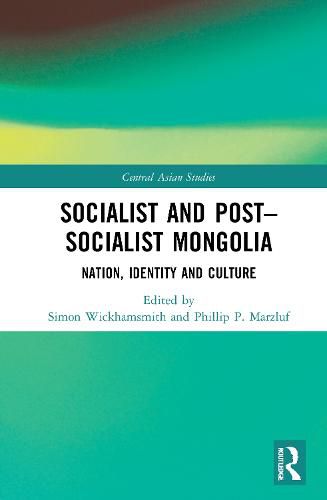Readings Newsletter
Become a Readings Member to make your shopping experience even easier.
Sign in or sign up for free!
You’re not far away from qualifying for FREE standard shipping within Australia
You’ve qualified for FREE standard shipping within Australia
The cart is loading…






This book re-examines the origins of modern Mongolian nationalism, discussing nation building as sponsored by the socialist Mongolian People’s Revolutionary Party and the Soviet Union and emphasizing in particular the role of the arts and the humanities. It considers the politics and society of the early revolutionary period and assesses the ways in which ideas about nationhood were constructed in a response to Soviet socialism. It goes on to analyze the consequences of socialist cultural and social transformations on pastoral, Kazakh, and other identities and outlines the implications of socialist nation building on post-socialist Mongolian national identity. Overall, Socialist and Post-Socialist Mongolia highlights how Mongolia’s population of widely scattered seminomadic pastoralists posed challenges for socialist administrators attempting to create a homogenous mass nation of individual citizens who share a set of cultural beliefs, historical memories, collective symbols, and civic ideas; additionally, the book addresses the changes brought more recently by democratic governance.
$9.00 standard shipping within Australia
FREE standard shipping within Australia for orders over $100.00
Express & International shipping calculated at checkout
This book re-examines the origins of modern Mongolian nationalism, discussing nation building as sponsored by the socialist Mongolian People’s Revolutionary Party and the Soviet Union and emphasizing in particular the role of the arts and the humanities. It considers the politics and society of the early revolutionary period and assesses the ways in which ideas about nationhood were constructed in a response to Soviet socialism. It goes on to analyze the consequences of socialist cultural and social transformations on pastoral, Kazakh, and other identities and outlines the implications of socialist nation building on post-socialist Mongolian national identity. Overall, Socialist and Post-Socialist Mongolia highlights how Mongolia’s population of widely scattered seminomadic pastoralists posed challenges for socialist administrators attempting to create a homogenous mass nation of individual citizens who share a set of cultural beliefs, historical memories, collective symbols, and civic ideas; additionally, the book addresses the changes brought more recently by democratic governance.